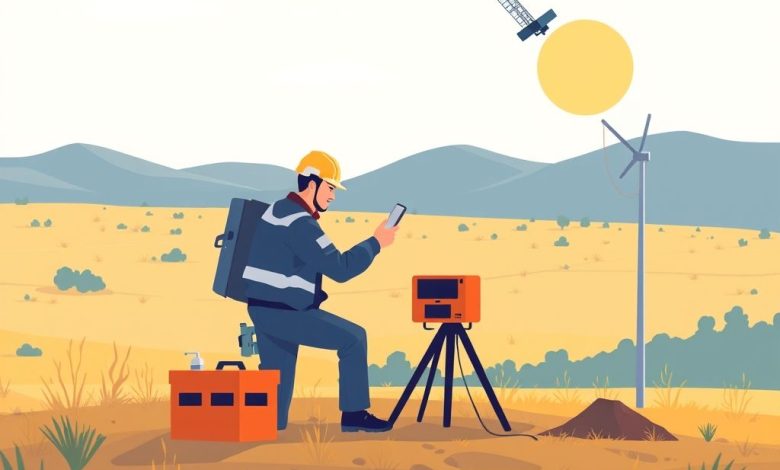Field Service Management with Satellite Connectivity

Introduction
Field Service Management (FSM) refers to the processes and systems used to manage and coordinate work orders, schedules, and resources for field-based services. With the advent of satellite connectivity, FSM has evolved to incorporate real-time data transmission from remote locations, enabling more efficient and effective service delivery. This article explores the integration of satellite connectivity into field service management, its benefits, challenges, and future prospects.
Evolution of Field Service Management
Field Service Management has been around for decades, but it has undergone significant transformations with advancements in technology. Traditionally, FSM relied heavily on manual processes and paper-based systems. However, the rise of digital technologies has revolutionized the industry, introducing automation, mobile applications, and data analytics.
Key Components of Modern FSM Systems
- Work Order Management
- Scheduling and Dispatching
- Resource Allocation
- Inventory Management
- Customer Relationship Management (CRM)
These components work together to streamline operations, improve efficiency, and enhance customer satisfaction.
The Role of Satellite Connectivity in FSM
Satellite connectivity has emerged as a crucial enabler for modern FSM systems. It allows for real-time communication between field technicians and central dispatch centers, even in areas with limited or no terrestrial network coverage.
Benefits of Satellite Connectivity in FSM
- Real-time Data Transmission
- Enables instant updates of job status, location, and progress
- Facilitates quick decision-making based on current field conditions
2. Improved Communication
- Allows seamless interaction between field staff and headquarters
- Reduces response times to customer inquiries and issues
3. Enhanced Safety Measures
- Enables continuous monitoring of technician safety
- Facilitates emergency response in remote areas
4. Increased Efficiency
- Optimizes route planning and scheduling
- Streamlines inventory management and restocking processes
5. Better Customer Experience
- Provides accurate estimated arrival times
- Enables proactive issue resolution through remote diagnostics
Challenges in Implementing Satellite Connectivity in FSM
While satellite connectivity offers numerous advantages, there are several challenges to consider:
- Cost Implications
- Higher initial investment in hardware and subscription fees
- Potential increased operational costs due to data usage
2. Technical Complexity
- Requires specialized knowledge to set up and maintain
- Potential for connectivity disruptions in extreme weather conditions
3. Privacy and Security Concerns
- Ensuring secure transmission of sensitive data
- Compliance with data protection regulations
4. Infrastructure Limitations
- Coverage gaps in remote or developing regions
- Potential for congestion during peak usage periods
Case Studies: Successful Implementation of Satellite Connectivity in FSM
Several companies have successfully integrated satellite connectivity into their FSM systems, resulting in improved operational efficiency and customer satisfaction.
Example 1: Utility Company
A large utility company implemented a satellite-enabled FSM system to manage maintenance and repair operations in rural areas. The system allowed technicians to upload meter readings directly from the field, reducing the need for physical visits and improving billing accuracy. Additionally, real-time tracking enabled faster response times to outages, enhancing overall service reliability.
Example 2: Telecommunications Provider
A telecommunications provider utilized satellite connectivity to extend its network coverage to remote communities. The FSM system enabled technicians to troubleshoot and diagnose issues remotely, reducing the need for site visits and minimizing downtime. This approach not only improved service quality but also reduced operational costs associated with maintaining infrastructure in hard-to-reach areas.
Future Trends in FSM with Satellite Connectivity
As technology continues to advance, we can expect further innovations in FSM systems incorporating satellite connectivity:
- Artificial Intelligence Integration
- Predictive maintenance based on historical data and real-time inputs
- Automated scheduling optimization
2. Internet of Things (IoT) Expansion
- Integration of smart devices for real-time monitoring
- Enhanced predictive analytics capabilities
3. 5G and Beyond
- Faster data speeds for improved real-time communication
- Reduced latency for critical applications
4. Augmented Reality (AR) Applications
- Virtual assistance for technicians in the field
- Enhanced training and troubleshooting capabilities
Conclusion
Field Service Management with satellite connectivity represents a significant leap forward in operational efficiency and customer satisfaction. By leveraging real-time data transmission and global coverage, FSM systems can now function optimally even in the most challenging environments. While challenges remain, the benefits of improved communication, enhanced safety measures, and increased efficiency make the integration of satellite connectivity into FSM systems a compelling strategy for forward-thinking organizations.
As technology continues to evolve, we can expect even more innovative applications of satellite connectivity in Field Service Management. Companies that embrace these advancements will be well-positioned to deliver superior service quality, reduce operational costs, and maintain a competitive edge in their respective markets.



